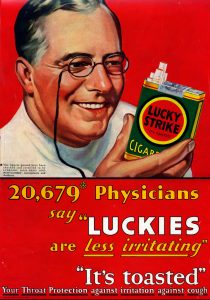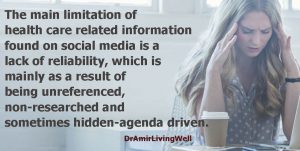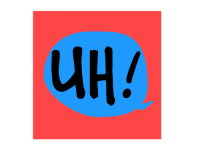Health, fitness, nutrition and training can be a little like having a chatty friend who just had her first visit to a proctologist – it’s easy to reach a point where you have too much information.
At least with your friend, you can probably assume that what she tells you is true, unbiased and unmotivated by money, unless she tells you that the proctologist pulled an electric train set in mint condition out of her butt and it can be yours for only $90. It’s easy to find even less probable claims in so-called ‘health media’ and on social media.
The tales I could tell…
First up, here’s my full disclosure – I have worked for health media and brand media for health, fitness and nutrition clients. I’m not proud. It’s said that the reason Superman needs two identities is that he fights for truth, justice, and the American Way. As a professional writer and a seeker of truth on all things health and fitness, I often felt that I needed two identities, too.
Certain women’s health magazines used to give me detailed briefs for health topics they wanted me to explore… but they’d also tell me the conclusions they wanted me to come to.
My intentions were good. I felt that by taking part in the process, I could fill the gaps that I so often saw when looking for information for myself, my friends and training clients. Sounds great, right? But that’s not always what the media or brands want.
Certain women’s health or lifestyle magazines used to give me detailed briefs for articles on health topics they wanted me to explore… but the brief would also tell me the conclusions they wanted me to come to without having done any research themselves. Major weight loss companies, would ask me to research weight loss topics, show research and sources, then share none of these with the reader, since each topic was limited to 125 words. A little knowledge can be a dangerous thing, so they say, particularly to a weight loss company that depends on its clients’ dependency on them. Sometimes media organisations would push people at me to interview, even though they weren’t the most relevant sources, or they weren’t articulate or unbiased enough to offer anything to objectively inform the reader.

Like social media, both the best thing and the worst thing about the internet is that it is largely unregulated or answerable to any minimum standards of accuracy or information value. The other problem is that health and wellness websites often have a commercial or other bias that compromises the value of their information, and this can occur in a direct way, but more likely it occurs in a more indirect manner.
I received a request to write some material for the website of a New York Times best-selling author of nutrition books. As is often the case, the website was completely built around his name and personality, even though the content is produced by a hive of worker bees.
My first task was to develop two blogs – with the headlines and tenets already supplied – from a video of the ‘personality’ ranting to camera. He made about 17 claims per minute, all with little or no reference material, justification or explanation. My job was to find materials (reports, studies, etc.) that justified his claims. Worse, he sometimes contradicted himself, and I had been supplied with a headline of ’10 foods to…” when he had only mentioned six or kind of seven, so it was up to me to make up the rest. This is how those big-personality / celebrity health websites roll. (For the record, I ran away from this gig!)
Cut through the confusion
You can make better choices when selecting your health, fitness, nutrition and wellness information by following these 10 points.
Look for an argument… is there any at all?
Your health and wellbeing are too important to follow claims and recommendations which are presented as commands or prescriptions without even any reasoning or explanation to them at all. This particularly applies to information from or about the diet industry – perhaps the only industry that sells a product that fails 95 per cent of the time, and yet they still stay in business. Nutrition is also an area where even research or recommendations that are five years old can be out of date (but not always!).
Note how strong the evidence is and whether it is loaded with any conditions (e.g. a recommendation may be directed to people with high cholesterol). Also look at whether a report or a study was based on appropriate use (of a drug, supplement, food, activity) or an extreme or special circumstances. When I worked as Communications Manager for a national professional association of therapeutic goods manufacturers and distributors, I often battled media reports that gave too much voice (and that voice was often screaming panic) to incidents or studies where a substance had been used very differently to the recommended guidelines. Sometimes it was a bit like someone saying, “Subway makes you fat! I ate four foot-long subs for lunch every day for a month and I put on 5kg!”
Beware the loudest voice
Lifestyle reporting is usually based on clicks, not relevance or importance. That’s why you’ve probably read about every favourable study on chocolate, when you should see more articles pop up about eating more fibre and why you should get more protein from pulses.
Sometimes the source material is just too popular. For example, experiments done on the popular TV show, Trust Me, I’m a Doctor have been reported around the world, even though the sample size of the experiments are often tiny. (see ‘Is reheated pasta less fattening?’) This is not to devalue such experiments – importantly, they open up further discussion and enquiry and can lead to larger studies. To his credit, Dr Mosley’s reaction to these results are usually very modest. He’ll mutter something like, “Well that was interesting, it’s certainly something worth experimenting on myself,” rather than yelling, “I’M A FRICKIN’ GENIUS! This is gonna change the world – dollar-dollar-bills, y’all!”
Look for overt and covert reasons why the information may contain a bias
A bias may exist because the information relates to the key area for business of a company’s service or products, or those of a partner, affiliate partner, sponsor, advertiser or co-owner of the organisation providing the information. Unfortunately, this happens a lot in health, but sometimes you need to cut some slack – sometimes a commercial entity has little option but to fund research because it’s the only way the research will get done.
There may also be a confirmation bias form an individual with long-held views, or even from somebody who is an authority or specialist in the topic of the information. Scientists are not exempt here. An American study published in The Journal of Experimental Social Psychology noted that when scientists were put in situations where they were expected to be an expert or see themselves as experts, they tended to over-estimate the accuracy of their own beliefs.
Check if the information is based on poor or compromised source material
Withholding details in a report can change the meaning or relevance of a study or a claim, but media will do this if it helps fit a clickbait headline or a shorter, prettier format. Often researchers themselves acknowledge a study’s weaknesses, but media can ignore these for convenience.
In a time of online news and a 24/7 news cycle, there is more pressure on less journalists and sub-editors (if they exist at all) to produce more content, yet there are less checks because there is more opportunity to correct information after it is broadcast. This means that journalists often rely on shoddy sources of information and do inadequate amounts of research. Popular scientist and author, Dr Karl Kruszelnicki, noted a report about how prayer made people survive operations better, which very quickly spread across all media.
“So I got hold of the original paper,” Dr Karl said. “It cost me $30. I then spent two hours reading it. Basically, it was a bunch of fundamentalist Christians who massaged the data enormously.”
Try to put the claims into context
Ask yourself if the information is largely targeted to a particular population. Bodybuilding magazines are an extreme example. As a trainer, I have watched people struggle – and get injured – trying to follow workouts in these magazines that supposedly come from very experienced bodybuilders who regularly access steroids and other drugs that allow them to train longer and at a higher intensity per session than the drug-free average gym joe, and then recover much faster, too.
Context must also be considered for anecdotal information, too. For example, someone may advocate the Paleo Diet because they lost 19kg. However, by following the Paleo Diet – or almost any diet – they may have put themselves into a calorie debt and replaced the garbage they used to eat with more fresh and nutritious food – oh, and they took up CrossFit. None of this justifies why we should all be on the Paleo Diet.
Judge if the person or organisation behind the content is competent enough to pass on information in this area
The person providing the information may not be a scientist or professional in this particular field, but they may have training and experience in the analysis and reporting of this field, or in employing information in this fields for purposes beyond themselves. For example, they coach others rather than simply say, “I was fat and now I’m less fat, therefore everyone should know my views on weight loss”.
Is the media simply telling you what you want to hear?
We know that if something sounds too good to be true, it often is. This is never more true than with fitness and nutrition information, where we all want to believe that there are answers that require little effort, change or time.
Choose and use a select and limited number of sources – don’t be easily distracted
Your go-to list should include professional and independent organisations that analyse and assess information, even when it comes from outside their own organisations – in other words, experts in the area have done a lot of the work for you. Examples include the Mayo Clinic, the American College of Sports Medicine, and professional associations of dietitians and sports dietitians are a good source of updated information.
Look for references
Look for links to studies and reports from professional bodies or conferences, for example. Hyperlinks to a newspaper report can simply justify the cycle of vagueness.
If you end up down the rabbit hole with a research paper (not just the abstract), begin by reading the introduction, not the abstract. The intro should identify what problem that this study or the entire field is trying to solve. Read the conclusion and abstract last because it can be biased by the authors’ interpretations.
Open your mind
Health, exercise science and especially nutrition are fields in which we there is still so much to know and learn. Consequently, you have to be prepared to be wrong, or at least be prepared to shift your beliefs and practices as new research and better methods come about. So it’s good to not be too attached to one food or one form of exercise, or a single method to maintain your health issues, but spread your bets across the table. Don’t get hooked on one superfood or restrictive diet, eat a broad range of nutritious foods. Don’t be a one-trick pony when it comes to your exercise routine, at least occasionally do different styles of exercise and work different energy systems. Why just rely on plant-sterol foods to help your cholesterol when you can also do regular aerobic exercise and eat foods high in LDL-lowering Omega-3 oils, too?







